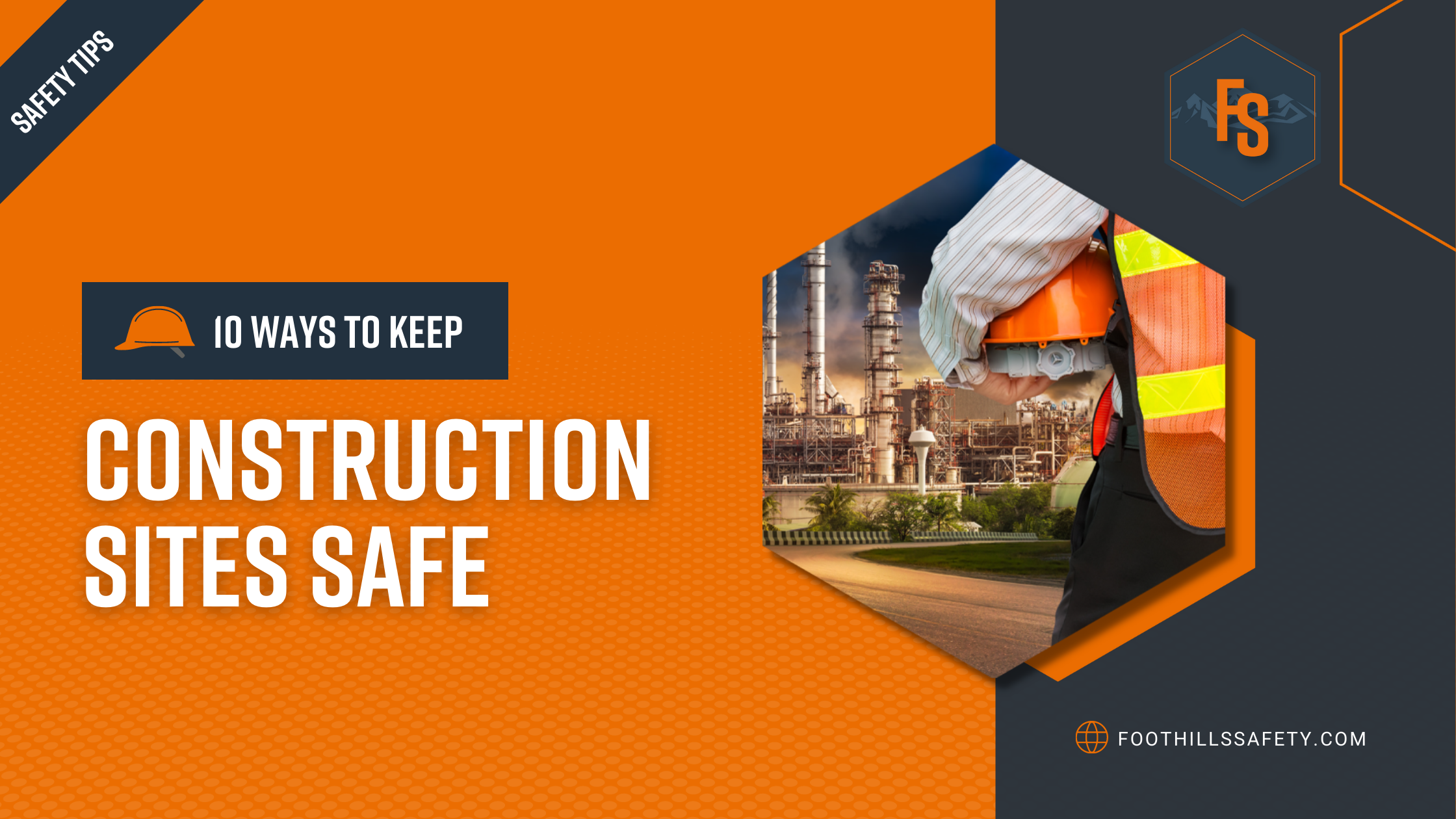10 Ways to Keep construction sites safe
Construction sites are filled with hazards that can endanger the lives of all people on site. Preventative measures should be taken to promote a safe work environment and keep everyone as safe as possible. Construction sites are filled with hazards like heavy machinery, hot surfaces, and dangerous chemicals, working from heights, electrical hazards and more. How can you make your construction site safer?
Here are 10 ways to keep construction sites safe
01 / Have a safety plan
Have a safety plan in place before starting work on any project. Each job/project requires a safety plan and meeting. For jobs longer than a week, it is important to review or create a new safety procedure at the beginning of the week. This helps any new crew members catch up on what has been done so far and what the potential hazards could be.
02 / Wear PPE
Wear personal protective equipment including hard hats, gloves, high visibility vests and steel toed boots. Working in tandem with your Safety Plan it’s important to identify all required PPE for each task.
03 / Report unsafe conditions
Report any unsafe conditions to your supervisor or the safety department. Your on site knowledge and experience can help save a new/existing employee from being injured or killed on the job when you bring attention to potential hazards that might have been missed.
04 / know how to protect yourself
Know what type of hazardous materials will be used and the corresponding personal protective equipment that will be needed. For WHIMIS training click here to get certified.
05 / Know where to go for help
Be aware of where the nearest first aid kit, fire extinguisher, emergency exits and fire alarms are. It’s important to practice scenarios of what roles and actions there are during an emergency. Often this is done during CPR or First Aid Training.
06 / Keep up to date on Your industry's occupational safety & health regulations
It’s Important to stay current with your company’s safety regulations. This should be reviewed annually or when there is a significant update where employees should be made aware immediately.
07 / Stay alert when working near machinery
Be aware of rotating machines and any loose clothing or hair. Watch out for pinch points and crush points from hydraulic machinery. Power tools safety on the job and at home is very important as well. Power tools are responsible for a large portion of injuries in the work place and at home.
08 / never use drugs
Never use drugs or alcohol on the job site, be aware that some prescription drugs can also cause drowsiness where workers will not be able to operate heavy machinery properly. Click here for more information.
09 / prevent falls
Prevent falls by using guard rails and safety harnesses with retractable lanyards.
10 / stay hydrated
Ensure workers have access to water to prevent dehydration.
There are many ways to prevent accidents on a job site. Safety training for all workers is essential and includes first aid & CPR courses. As an employer, it’s also vital that you create a safe work environment by keeping your construction equipment in good working order with regular maintenance checks done on time. Additionally, make sure there is enough lighting provided during night shifts or whenever visibility is poor due to weather conditions.
Preventing injuries in the workplace
Always know your surroundings, this includes what is above you and below you as well. Check out our blog on Dropped Object Prevention to learn more about the dangers of falling objects on the jobsite. There are many risk factors surrounding construction sites including heavy lifting, working with power tools, and exposure to harmful chemicals. Injuries from construction sites are common so it’s important that you take all necessary precautions to avoid them as well as recognize when a worker needs help or has been injured.
At the end of the day, safety is always the most important thing to be aware of. Whether you’re working on a construction site or in an office building, there are plenty of hazards that can keep your business from operating at full capacity. We hope this list makes you aware and recognize many of the potential hazards you come across on a daily basis.

